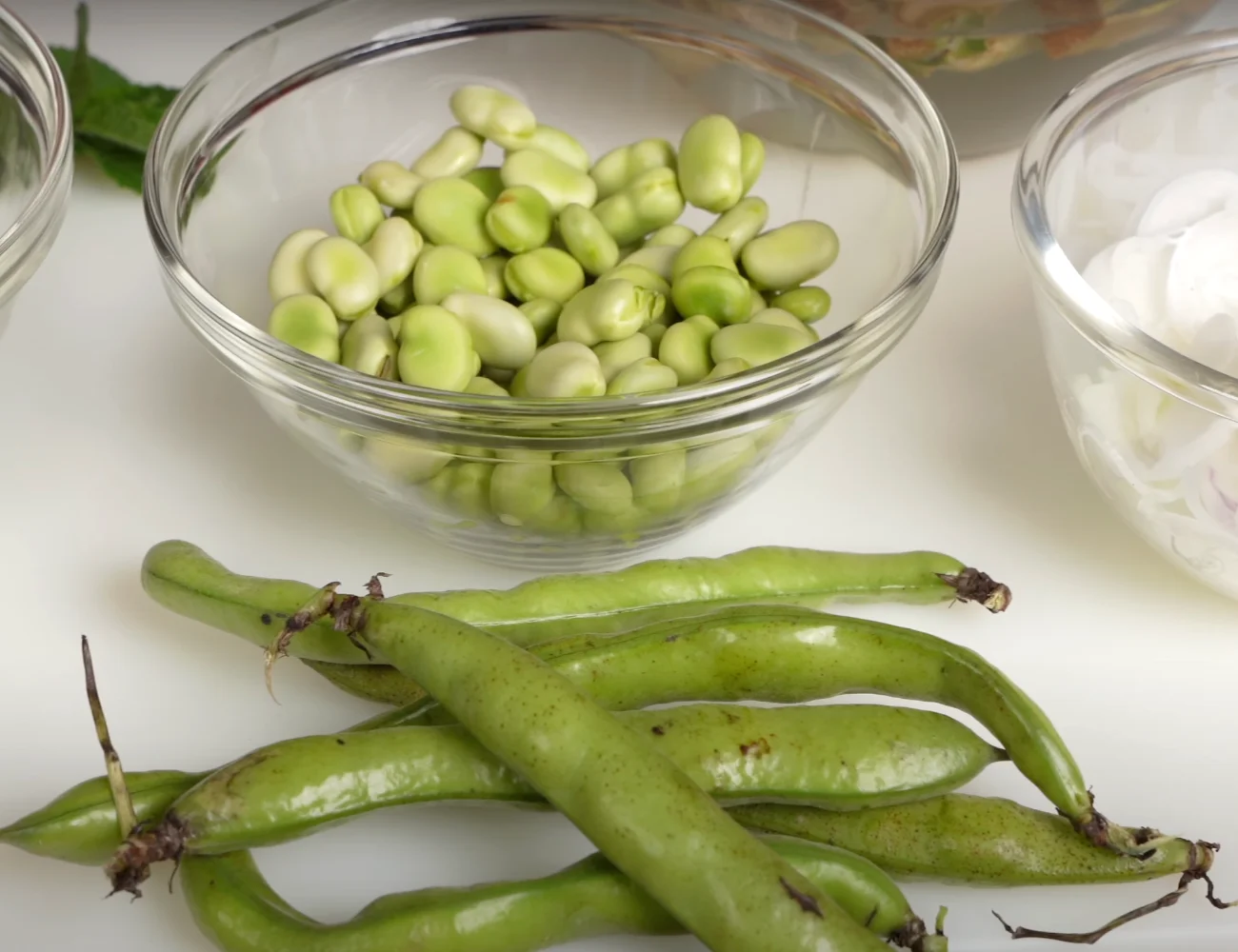Fava beans often pop up in authentic Italian food recipes. But… what are fava beans? What do they taste like? In this PIATTO™ guide, we’ll give you the low-down on one of Italy’s favorite spring vegetables!
Also known as broad beans, fava beans are a type of legume that are native to the Mediterranean region and parts of Asia. They are a cool-season crop and are typically planted in the fall or early spring. The plants can grow up to 6 feet tall and produce pods that contain 2-5 large seeds. By early May, Italian gardens often have fava beans ready to enjoy!

What do Fava Beans Taste Like?
Fava beans have a distinct flavor and texture that sets them apart from other types of beans. When cooked, they have a creamy texture and a slightly nutty flavor that pairs well with a variety of ingredients. In our opinion, they taste a bit like edamame. They are also a versatile ingredient that can be used in a range of dishes, from soups and stews to salads and dips.
One of the most popular ways to enjoy fava beans in Italy is paired with pecorino cheese. Many Italians also simply eat the fresh fava beans with pecorino cheese and bread.
Another classic Italian dish that features fava beans Vignarola Romana. This is an Italian Mixed Vegetables recipe traditional to Rome. It features not only fava beans, but other spring vegetables traditionally grown between grape rows in springtime.
Are Fava Beans Healthy?
In addition to being delicious, broad beans (aka fava) are also highly nutritious. They are an excellent source of plant-based protein, fiber, and a variety of vitamins and minerals. One cup of cooked fava beans contains about:
- 13 grams of protein
- 9 grams of fiber
- and significant amounts of folate, iron, and magnesium.
Despite their many benefits, fava beans are not without their drawbacks. Some people may be allergic to fava beans, and consuming them can cause a condition called favism in individuals with a genetic deficiency. Favism is a rare condition that can cause severe anemia, jaundice, and other health problems.
Can Fava Beans Be Eaten Raw?
If you’re interested in incorporating fava beans into your diet, you will want to remove the seeds from the pod (only in very young plants can you eat the seed pod). After removing the outer seed coat, fava beans can be eaten raw or cooked. However, because there are a some low level toxins found in fava beans (not unlike other legumes) some sources recommend boiling the beans about 10 minutes.
Raw fava beans technically contain a toxic compound called vicine that can cause illness. Like many other types of legumes, fava contains a lectin called phytohaemagglutinin. These “low toxin concentrations” can be killed by boiling the fava beans for 10 minutes.
To prepare fava beans, start by removing them from their pods and blanching them in boiling water for 1-2 minutes. Then, remove the outer skin from each bean to reveal the tender inner bean. You can continue cooking the inner bean according to your recipe.
Italian recipes for Fava (Broad ) Beans
Fava beans are a delicious and nutritious ingredient that are popular in many Italian dishes and Mediterranean Diet recipes! They have a distinct flavor and texture that sets them apart from other types of beans, and they are a good source of plant-based protein, fiber, and a variety of vitamins and minerals. If you’re interested in incorporating fava beans into your diet, be sure to prepare them properly and consider trying one of PIATTO’s recipes featuring this marvelous ingredient!